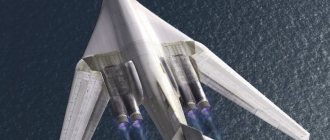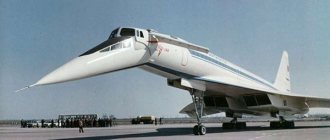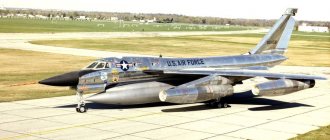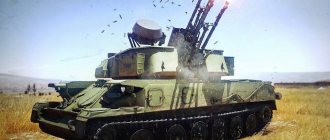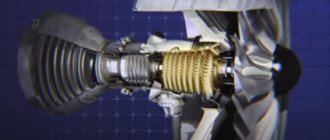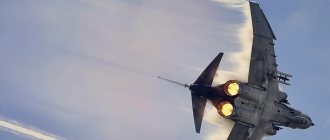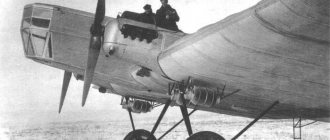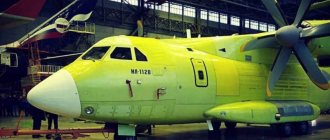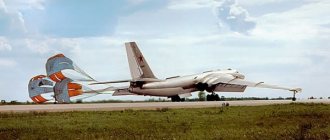TU-160M "White Swan" took to the skies
In Russia, the modernized supersonic strategic bomber TU-160M “White Swan” made its first flight from the airfield of the Kazan Aviation Plant. This is the first modernized aircraft that was designed in the branch, which is part of the Rostec state corporation. This was reported by the state corporation Rostec.
Sohu: Russian “White Swan” Tu-160 flashed against the backdrop of the US aircraft fiasco
In the territories of the former USSR, 35 Tu-160 strategic bombers were produced, of which 16 are currently in service with the Russian army. This unique aircraft has no analogues in the world, Sohu observers emphasized.
The existing Tu-160 aircraft have undergone numerous modifications, as a result of which they have received significant improvements,” PolitRussia journalists quote experts from the People’s Republic of China as saying.
In addition to the bombers themselves, which Russia inherited after the collapse of the Soviet Union, the Russian Ministry of Defense decided to also receive a modernized version of this aircraft. Thus, the Tu-160M, previously manufactured from scratch, took to the air for the first time. The test flight, which took place in the Moscow region, lasted more than half an hour. During this time, the aircraft crew performed several maneuvers at an altitude of 600 meters, and also tested the controllability of the missile carriers in some modes.
Initially, the White Swan was developed as a response to the appearance of the B-1 strategic bombers at the Pentagon, but the result of the work of Soviet engineers and designers exceeded all expectations. The USSR received a record-fast missile carrier, which has the highest maximum take-off weight among all aircraft of this type. These achievements were possible thanks to the NK-32 engines.
The Tu-160 became a world-class supersonic strategic bomber, and this aircraft is still relevant today. The Pentagon simply could not repeat the success of the NK-32 engine, Sohu columnists admired the tactical and technical characteristics of the product.
Compared to the American B-1s, which are rapidly becoming obsolete, the Russian White Swans continue to be the most dangerous aircraft. Experts from the People's Republic of China believe that in a few years the Tu-160 may become the world's only operating supersonic strategic missile carrier. Moreover, the characteristics of the Russian aircraft are such that some time ago it managed to evade two American fifth-generation F-35 fighters at once. Thus, the Russian “White Swan” flashed against the backdrop of the fiasco of US planes, the Chinese emphasized.
Let us remind you that earlier it became known that the Tu-160 maneuvers off the coast of Florida discouraged the US Air Force. As Sohu military experts said, the Russian planes caught the American military by surprise, who did not even know how best to respond to approaches to their own borders.
"Nuclear Triad"
The strategic missile-carrying bomber is a universal weapon. Unlike intercontinental ballistic missiles (ICBMs) or missile-carrying submarines, its use can be much more flexible.
Any ICBM is a disposable “doomsday” weapon: after its launch, the choice of further scenarios is small - either such a missile is already clearly heading towards its intended target, or before a certain point in time it can be commanded to self-destruct. Submarines also have similar restrictions: when receiving combat commands, they try to get rid of their ammunition as quickly as possible, presenting virtually disposable sea platforms for launching missiles.
But a strategic bomber can make long-distance flights and remain in the air for a long time in patrol mode, including near the borders of a potential enemy. This makes it possible to put political pressure on the enemy and ensures a quick strike in the event of the outbreak of war. Another advantage of strategic bombers is the ability to quickly maneuver forces and hit a target almost anywhere in the world, and not only with the help of nuclear weapons. For example, Tu-160 bombers were used during the operation of the Russian armed forces in Syria.
Together, ICBM carrier submarines and strategic bombers form the so-called “nuclear triad,” which makes it possible to reliably provide a response to any scenario of a global war or local conflicts involving the use of nuclear and conventional weapons. In the 20th century, only the USSR and the USA were able to create a full-fledged “nuclear triad”. In the 21st century, three of its elements are still owned by Russia and the United States.
wikipedia.org/mil.ru/CC BY 4.0
Why does Russia need nuclear weapons?
It is worth saying that in the 1990–2000s, our country was faced with the full issue of the loss of the necessary competencies that make it possible to maintain and develop all components of the “nuclear triad” in combat condition. Now in Russia the production of new heavy land-based Sarmat ICBMs is just beginning, and the first post-Soviet Bulava ICBM for submarines was put into service only in 2022. In previous decades, Russia always faced the extremely unpleasant prospect of partial loss of its “nuclear shield.”
mil.ru / Official website of the Ministry of Defense of the Russian Federation
Such a situation would be extremely painful for the country, since the collapse of the “nuclear triad” would force it to spend much more effort and money on conventional weapons. This can be clearly understood from the example of neighboring China, which is forced to compensate for the weakness of its nuclear and high-tech weapons with the number of conventional troops, which amounts to more than two million people. For Russia, which has the fifth largest army in the world, this figure is only 900 thousand people - despite an objectively larger territory, constituting a sixth of the inhabited landmass.
Therefore, the restoration of serial production of the Tu-160M missile carrier is an extremely important milestone: Russia again receives all three elements of the nuclear triad - land, sea and air.
Design
The Tu-160 aircraft is designed according to the integral low-wing design with a variable-sweep wing, tricycle landing gear, all-moving stabilizer and fin. The wing mechanization includes slats, double-slotted flaps, and spoilers and flaperons are used for roll control. Four NK-32 engines are installed in pairs in engine nacelles at the bottom of the fuselage. TA-12 is used as an autonomous power unit (APU).
Fuselage
Integrated circuit planner. Technologically, it consists of six main parts, from F-1 to F-6. In the forward unsealed part, a radar antenna is installed in a radio-transparent radome, followed by an unsealed radio equipment compartment. The central integral part of the aircraft, 47.368 m long, includes the fuselage itself with a cockpit and two cargo compartments (weapons compartments), between which there is a center section caisson compartment and a fixed part of the wing; engine nacelles and the rear fuselage with a keel superstructure. The cockpit is a single pressurized compartment, which, in addition to the crew’s workplaces, houses various electronic equipment of the aircraft.
Wing
The wing on a variable sweep aircraft. The wingspan with a minimum sweep is 57.7 m. The rotating unit and control system are generally similar to the Tu-22M, but accordingly recalculated and strengthened. The rotating part of the wing can be adjusted along the leading edge from 20 to 65 degrees. The wing is of a coffered design, made mainly of aluminum alloys. Four-section slats are installed along the leading edge, and three-section double-slit flaps are installed along the rear edge. The root part of the flap section on the rotating part is also a ridge designed to smoothly mate the wing with the center section with minimal sweep. For roll control, six-section spoilers and flaperons are installed. The internal cavities of the wing serve as fuel tanks.
On the ground, moving the wing at large angles is prohibited (without special devices), since due to the centering shift the plane falls “on its tail.”
Chassis
The plane has a three-wheel landing gear with a front and a pair of main struts. The front strut is located in the forward part of the fuselage in an unpressurized niche under the technical compartment and is retracted back downstream. The front pillar has two wheels 1080x400 mm with an aerodynamic deflector that protects against foreign particles (debris) from getting into the engine air intakes from the wheels. Through the niche of the front leg, along the ground ladder, the entrance to the cockpit is made. The main racks have three-axle bogies with six wheels 1260x485 mm each. They are retracted into gondolas, back in flight, while being shortened, which requires less internal volume of the compartments. When released, the racks extend, simultaneously moving outward by 60 cm, increasing the track (which has a positive effect on stability when steering). The compartments of the main racks themselves are also technical compartments for placing various equipment. The chassis track is 5400 mm, the chassis base is 17,880 mm. There is a two-chamber gas-oil shock absorber on the front strut, and three-chamber shock absorbers on the main struts. The wheels of the front strut are rotating, controlled by the track control pedals in the cockpit.
Power point
The aircraft is equipped with four NK-32 engines, which are a further development of the NK-144, NK-22 and NK-25 line. Structurally, the NK-32 is a three-shaft double-circuit engine with mixing of output flows and a common afterburner with an adjustable nozzle. The axial three-stage compressor has fifteen stages and consists of three units: a three-stage low-pressure compressor, a five-stage medium-pressure compressor and a seven-stage high-pressure compressor. The division of the air flow along the contours is carried out behind the low pressure compressor, the selection of air for aircraft needs occurs behind the high pressure compressor. The combustion chamber is an annular type, multi-nozzle with two starting igniters. In the afterburner, flows are mixed and fuel is burned in afterburner mode. The drive box is equipped with a hydraulic pump, a DC generator and a three-phase alternating current drive-generator. The engine spins up when starting - from an air starter.
The engines are placed in pairs in nacelles under the fuselage. Rectangular air intakes with a vertically positioned adjustable wedge and six air supply flaps.
The TA-12 APU provides the aircraft with electricity and compressed air on the ground, and can also be used as an emergency power source in the air at altitudes up to 7 km.
Hydraulic system
The aircraft uses four high-pressure hydraulic systems operating in parallel with a discharge pressure of 280 kg/cm², and 7-50S-3 synthetic oil is used as the working fluid. The hydraulic drive is used to move control surfaces, takeoff and landing mechanization and landing gear, control drums of launchers, etc. Hydraulic pumps are installed two on each engine; turbopump units APU and TNUK are used as a reserve.
Fuel system
The filling capacity of the fuel tanks is approximately 171,000 liters of T-8 nitrided aviation fuel. Each engine is powered from its own supply tank. Part of the fuel is used for alignment. A retractable in-flight fuel receiver boom for air refueling is installed in the nose.
Electricity supply
Each of the four engines is equipped with a brushless DC generator and a GP-22 AC drive-generator with a power of 120 kVA. TA-12 APU generators are used as a backup source on the ground and in flight.
Armament of the Tu-160
Initially, the aircraft was built exclusively as a missile carrier - a carrier of long-range cruise missiles with nuclear warheads intended for attacks on area targets.
The Kh-55SM strategic cruise missiles in service with the Tu-160 are designed to hit stationary targets with predetermined programmed coordinates, which are entered into the missile’s memory before the bomber takes off. The missiles are placed on two MKU-6-5U drum launchers (similar ones are installed on the Tu-95MS), six each, in two cargo compartments of the aircraft. To hit targets at shorter ranges, the weapons may include Kh-15S aeroballistic hypersonic missiles (24 missiles, 12 on each MKU).
The aircraft, after appropriate re-equipment, can also be equipped with free-falling bombs (up to 40,000 kg) of various calibers, including nuclear ones, disposable cluster bombs, sea mines and other weapons.
In the future, the bomber's armament is planned to be significantly strengthened due to the introduction of high-precision cruise missiles of the new generation X-555 and X-101, which have an increased range and are designed to destroy both strategic and tactical ground and sea targets of almost all classes.
Flight navigation, instrumentation and radio-electronic equipment
The Tu-160 is equipped with a four-channel (in other words, with fourfold redundancy) fly-by-wire automatic on-board control system and redundant mechanical wiring. The aircraft controls are dual, there are not steering wheels installed, as is customary on heavy aircraft, but handles (RUS). In pitch, the aircraft is controlled using an all-moving stabilizer, in roll - by flaperons and spoilers, and in heading - by an all-moving fin. Two-channel astroinertial navigation system - K-042K. The Obzor-K sighting and navigation system includes a forward-looking radar and an OPB-15R optical-television sight. The Baikal onboard defense complex has radio and infrared threat detection equipment, radio countermeasures systems and fireable decoy cartridges. A separate system (SURO) is used to work with missile weapons. Most of the aircraft's equipment is integrated depending on the solution to the current task.
The crew instrument panels are equipped with traditional dial instruments (mostly similar to those used on the Tu-22M); there are no multifunctional liquid crystal indicators on the aircraft. At the same time, a lot of work has been done to improve the ergonomics of workplaces and reduce the number of instruments and indicators, in comparison with the workplaces of the Tu-22M3 crew.
The following instruments and indicators are installed on the ship's commander's instrument panel:
– radio altimeter indicator A-034, – reserve attitude indicator AGR-74, – radiomagnetic indicator RMI-2B, – position indicator IP-51, – vertical parameters indicator IVP-1, – combined instrument DA-200, – altimeter indicator UV-2Ts or UVO-M1, – barometric altimeter VM-15, – flight command instrument PKP-72, – navigational planning instrument PNP-72, – speed indicator ISP-1, – combined speed indicator KUS-2500 or KUS-3 (depending on the year aircraft release), – indicator of the radar exposure warning system.
The following indicators and instruments are installed on the co-pilot's instrument panel:
– vertical parameters indicator IVP-1 or light signaling unit (depending on the year of manufacture of the aircraft), – speed indicator ISP-1, – combined speed indicator KUS-2500 or KUS-3 (depending on the year of manufacture of the aircraft), – flight command instrument PKP -72, – planning navigation device PNP-72, – combined device DA-200, – altimeter indicator UV-2Ts or UVO-M1, – radio altimeter indicator A-034.
Production
In 1984, the Tu-160 was put into serial production at the Kazan Aviation Plant (KAPO). The first production vehicle (No. 1-01) took off on October 10, 1984, the second production vehicle (No. 1-02) on March 16, 1985, the third (No. 2-01) on December 25, 1985, the fourth (No. 2-02) ) - August 15, 1986.
In January 1992, Boris Yeltsin decided to possibly suspend the ongoing serial production of the Tu-160 if the United States stopped serial production of the B-2 aircraft. By this time, 35 aircraft had been produced. By 1994, KAPO transferred six Tu-160 bombers to the Russian Air Force. They were stationed at an airfield near Engels in the Saratov region.
In May 2000, the new Tu-160 (b/n “07” “Alexander Molodchiy”) entered service with the Air Force.
The Tu-160 complex was put into service in 2005. On April 12, 2006, it was announced that state tests of the upgraded NK-32 engines for the Tu-160 had been completed. The new engines are characterized by a significantly increased physical resource and increased reliability.
On December 28, 2007, the first flight of the new production aircraft Tu-160 was carried out in Kazan.
On April 22, 2008, Air Force Commander-in-Chief Colonel General Alexander Zelin told reporters that another Tu-160 strategic bomber would enter service with the Russian Air Force in April 2008.
On April 29, 2008, a ceremony took place in Kazan to transfer the new aircraft into service with the Air Force of the Russian Federation. The new aircraft was named “Vitaly Kopylov” (in honor of the former director of KAPO Vitaly Kopylov) and was included in the 121st Guards Aviation Sevastopol Red Banner Heavy Bomber Regiment, based in Engels. It was planned that in 2008 three combat Tu-160s would be modernized.
Exploitation
The first two Tu-160 aircraft (No. 1-01 and No. 1-02) entered the 184th Guards Heavy Bomber Aviation Regiment in Priluki (Ukrainian SSR) in April 1987. At the same time, the aircraft were transferred to the combat unit before the completion of state tests, which was due to the rapid pace of introduction of American B-1 bombers into service.
By 1991, 19 aircraft arrived in Priluki, of which two squadrons were formed. After the collapse of the Soviet Union, 8 of them were returned to Russia.
In 1992, Russia unilaterally stopped flights of its strategic aviation to remote regions.
In 1998, Ukraine began dismantling its strategic bombers using funds allocated by the United States under the Nunn-Lugar program.
In 1999-2000, an agreement was reached under which Ukraine transferred eight Tu-160s and three Tu-95s to Russia in exchange for writing off part of the gas purchase debt. The remaining Tu-160s in Ukraine were disposed of, except for one aircraft, which was rendered unfit for combat and is located in the Poltava Museum of Long-Range and Strategic Aviation. The last of the remaining strategic aviation complexes Tu-160 of the Ukrainian Air Force was destroyed on February 2, 2001.
By the beginning of 2001, in accordance with the SALT-2 Treaty, Russia had 15 Tu-160 aircraft in combat service, of which 6 missile carriers were officially armed with strategic cruise missiles.
In 2002, the Ministry of Defense entered into an agreement with KAPO to modernize all 15 Tu-160 aircraft.
On September 18, 2003, during a test flight after engine repair, a disaster occurred - the plane with tail number “01” crashed in the Sovetsky district of the Saratov region during landing. The Tu-160 crashed in a deserted place 40 km from the home airfield. There were four crew members on board the vehicle: commander Yuri Deineko, co-pilot Oleg Fedusenko, as well as Grigory Kolchin and Sergei Sukhorukov. They all died.
On April 22, 2006, the Commander-in-Chief of Long-Range Aviation of the Russian Air Force, Lieutenant General Khvorov, said that during the exercise, a group of modernized Tu-160 aircraft penetrated US airspace and went unnoticed. However, this information has neither confirmation nor refutation.
On July 5, 2006, the modernized Tu-160 was adopted by the Russian Air Force, which became the 15th aircraft of this type (c/n “19” “Valentin Bliznyuk”). The Tu-160, which was put into service, was built in 1986, belonged to the Tupolev Design Bureau and was used for testing.
As of the beginning of 2007, according to the Memorandum of Understanding, the Russian Strategic Nuclear Forces had 14 Tu-160 strategic bombers in service (one bomber was not declared in the START data (w/n “19” “Valentin Bliznyuk”)).
On August 17, 2007, Russia resumed strategic aviation flights in remote regions on a permanent basis.
In July 2008, reports appeared about the possible deployment of Il-78 tankers at airfields in Cuba, Venezuela and Algeria, as well as the possible use of airfields as backup for Tu-160 and Tu-95MS.
On September 10, 2008, two Tu-160 bombers (“Alexander Molodchiy” with no. 07 and “Vasily Senko” with no. 11) flew from their home base in Engels to the Libertador airfield in Venezuela, using the Olenegorsk airfield as a jump-off airfield. in the Murmansk region. Part of the way through Russian territory, the missile-carrying bombers were accompanied (for cover purposes) by Su-27 fighters of the St. Petersburg Air Force and Air Defense Association; while flying over the Norwegian Sea, the Russian bombers were intercepted by two F-16 fighters of the Norwegian Air Force, and near Iceland by two fighters US Air Force F-15. The flight from the stopover site in Olenegorsk to Venezuela took 13 hours. There were no nuclear weapons on board the planes, but there were training missiles that were used to practice their combat use. This is the first time in the history of the Russian Federation that Long-Range Aviation aircraft have used an airfield located on the territory of a foreign state. In Venezuela, the aircraft carried out training flights over neutral waters in the Atlantic Ocean and the Caribbean Sea. On September 18, 2008, at 10:00 Moscow time (UTC+4), both aircraft took off from the Maiquetia airfield in Caracas, and over the Norwegian Sea, for the first time in recent years, made night refueling in the air from an Il-78 tanker. At 01:16 (Moscow time) on September 19, they landed at the base airfield in Engels, setting a record for flight duration on the Tu-160.
On June 10, 2010, two Tu-160s set a flight record for a distance of 18 thousand km. The flight duration of the missile carriers exceeded last year's figure by two hours, amounting to 24 hours 24 minutes, while the flight range was 18 thousand kilometers. The maximum volume of fuel during refueling was 50 tons, whereas previously it was 43 tons.
Current situation
In February 2004, it was reported that three new aircraft were planned to be built.
At the beginning of 2013, the Russian Air Force has 16 Tu-160 aircraft.
In April 2015, Russian Defense Minister Sergei Shoigu announced the need to resume bomber production. The Russian Air Force will acquire at least 50 Tu-160M bombers. The resumption of production of new aircraft of the Tu-160M / Tu-160M2 classification is expected no earlier than 2023.
On August 12, 2016, at the “I Choose the Sky” festival, held at the Kurkachi airfield (Vysokogorsky district of Tatarstan), the audience was shown the newest Tu-160M (the first in the M line), which should soon be transferred to the Russian Aerospace Forces.
As of August 27, 2016, the still unnamed Tu-160M was undergoing factory flight tests at the Borisoglebskoye airfield of the Kazan Aviation Plant.
In November 2016, the Kazan Aviation Plant began to restore key technologies for the production of the Tu-160 strategic bomber-missile carrier. Earlier, Russian Deputy Defense Minister Yuri Borisov stated that mass production of the vehicles should begin in 2023.
As of 2022, the Russian Aerospace Forces consists of 16 aircraft. A decision was made to completely modernize them. Mid-June 2022 - Deputy Minister of Defense of the Russian Federation Yu. I. Borisov stated “... that preliminary welding confirmed the restoration of the aircraft manufacturing technology. The first modernized Tu-160M2 aircraft is scheduled to take off in 2022, and serial production as part of the re-equipment of strategic aviation is scheduled for 2021.”
Modification projects
Tu-160 (NK-74) – With more economical NK-74 engines (increased flight range).
Tu-160V (Tu-161) – Project of an aircraft with a power plant running on liquid hydrogen. It also differed from the base model in the size of the fuselage, designed to accommodate tanks with liquid hydrogen.
Tu-160K – Draft design of the Krechet combat aircraft and missile system. Development began in 1983, Yuzhnoye SDO released it in December 1984. It was planned to deploy 2 two-stage ballistic missiles (1st stage - solid fuel, 2nd - liquid) weighing 24.4 tons on a carrier aircraft. The total range of the complex was assumed to be more than 10,000 km. Warhead: 6 MIRV IN or monoblock warhead with a set of means to overcome missile defense. KVO - 600 m. Development was stopped in the mid-1980s.
Tu-160M – Tu-160 modernization project, which provides for the installation of new radio-electronic equipment and weapons. Capable of carrying conventional weapons, for example, 90 OFAB-500U, weighing about 500 kg and with a continuous destruction radius of 70-100 m.
Tu-160M2 – Project. It is planned to be implemented with elements of integrated modular avionics (IMA). “As part of the Tu-160 modernization project, KRET will create new computer and on-board systems, control equipment, a strapdown inertial navigation system, an electronic warfare system, fuel and flow metering systems, as well as weapons control systems.”
Tu-160P – Project of a heavy escort fighter armed with long- and medium-range air-to-air missiles.
Tu-160PP - Electronic warfare aircraft, was brought to the stage of manufacturing a full-scale mock-up and the composition of the equipment was completely determined.
Tu-160SK - Carrier aircraft of the aerospace liquid three-stage system "Burlak" weighing 20 tons. It was assumed that the mass of the payload launched into orbit could reach from 600 to 1100 kg, and the cost of delivery would be 2-2.5 times lower than that of ground-launched rockets of similar payload capacity. The rocket launch was to be carried out at altitudes from 9 to 14 km with a carrier flight speed of 850-1600 km/h. In terms of its characteristics, the Burlak complex was supposed to surpass the American subsonic launch complex, created on the basis of the Boeing B-52 carrier aircraft and the Pegasus launch vehicle. The main purpose is to replenish the constellation of satellites in conditions of mass destruction of cosmodromes. Development of the complex began in 1991, commissioning was planned in 1998-2000. The complex was to include a command and measurement station based on the Il-76SK and a ground support complex. The flight range of the carrier aircraft to the ILV launch zone is 5000 km. On January 19, 2000, in Samara, the State Research and Production Space Center "TsSKB-Progress" and the Aerospace Corporation "Air Launch" signed a cooperation agreement on the creation of an aviation and space missile complex (ARKKN) "Air Launch".
According to the commander of Russian long-range aviation, Igor Khvorov, the modernized aircraft will be able, in addition to cruise missiles, to hit targets with aerial bombs, will be able to use communications through space satellites and will have improved targeted fire characteristics. The Tu-160M is planned to be equipped with a new weapons system that will allow the use of advanced cruise missiles and bomb weapons. Electronic and aviation equipment will also undergo complete modernization.
The White Swan is back. Production of the plane that inspires terror in America has been restored
This aircraft is the pride of Soviet engineering. He is one of the symbols of the highest level of technology in the USSR, the highest level of engineering school, the highest level of aircraft manufacturing in the Land of the Soviets. The Tu-160 is one of the masterpieces of aviation of all times and peoples, the indisputable pinnacle of human genius.
But the task of restoring its production was also very difficult. At one time, many technologies, without which it was impossible to build such a perfect aircraft, were lost. The equipment was destroyed. And the documentation is missing.
The United States was very afraid of this car, to the point of horror. Therefore, they did everything to ensure that Russia lost the “White Swan”. Some of the planes were destroyed in Ukraine, but in Russia, obviously, there were many people who were influenced and who did everything to ensure that Russia could never again restore the production of this machine.
But overcoming all the difficulties, recreating many technologies, starting engine production from scratch, Russia, to spite everyone, restored the production of this formidable machine:
On January 12, the first newly manufactured strategic missile carrier Tu-160M made its first flight from the Kazan Aviation airfield (as part of the UAC Rostec State Corporation).
The flight took place at an altitude of 600 meters and lasted about 30 minutes. The crew of test pilots of Tupolev PJSC performed maneuvers to test the stability and controllability of the aircraft in the air.
It is worth noting that this is no longer a copy of a Soviet aircraft, it is the same on the outside, but inside there is a completely new, most modern filling. The aircraft retains its appearance, but is created on a completely new technological basis using digital technologies.
As part of the implementation of the program under the state contract between the Ministry of Industry and Trade of Russia and Tupolev, the design documentation for the Tu-160M aircraft was completely digitized in a short time, the technology of vacuum welding of titanium products was restored, the production of aircraft airframe units was resumed, a new cooperation was formed from leading industrial enterprises in the field of metallurgy , aircraft manufacturing, mechanical engineering and instrument making, the main part of which is part of the Rostec State Corporation.
It is worth saying that this aircraft is important not only for Russia as a whole, but also for the Kazan aircraft plant. For him, this is a workload for many years. As part of the preparation for production, the plant was modernized: the workshop equipment and flight test base were updated, and the world's largest installation for electron beam welding and vacuum annealing of titanium was put into operation.
“Tu-160 is one of the largest and most high-tech projects in the aviation industry. The implementation of this program required not only updating production facilities, but also creating a fundamentally new digital environment for working on the project. A number of aircraft design bureaus participated in the preparation of digital documentation for the benefit of the project. The fundamental importance of today’s event is that the new machine was completely built from scratch,” said UAC General Director Yuri Slyusar. “The new machine has 80 percent updated and modernized systems and equipment.”
The fact that Russia was able to literally re-create the production of this machine suggests that the highest level of Soviet aircraft construction, the Soviet engineering school was generally preserved in our country, and we are not ashamed of our great ancestors. Now don't be ashamed!
Don't forget to share the news on your social media pages below.

